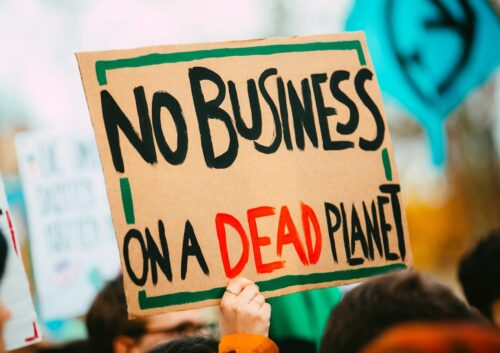Startups promising to power planes, ships, and trucks with clean fuel are sputtering before they get off the ground, showing how hard it will be to wean many industries off oil and gas. [emphasis, links added]
A company backed by United Airlines that raised hundreds of millions of dollars to turn trash into jet fuel appears to have shut down.
Another, backed by Airbus, JetBlue, and GE Aerospace, that was working on using hydrogen to power planes went bust.
Chevron, BP, and Shell, meanwhile, are scaling back projects that make biofuels from cooking fats, oils, greases, and plant material.
“The excitement of the early days has not lived up to the hype,” said Andy Marsh, chief executive of Plug Power, a startup that recently opened one of the country’s first plants making green hydrogen, a potential replacement for fossil fuels in industries such as steelmaking and chemical production.
Shares of Plug Power have tumbled more than 90% since the passage of the U.S. climate law two years ago. Shares of biofuels startup Gevo, where Marsh is a board member, are down about 80% in that span.
The failures and delays are all but extinguishing the early optimism after the climate law passed.
Rising costs have pushed out project timelines and made it more difficult for companies to raise money. The government’s delays in completing tax credits are adding to the challenges.
Without clean fuels, emissions at many companies are expected to keep climbing, threatening U.S. and global climate targets.
Industries including aviation and shipping are counting on the new fuels because wind and solar power and batteries can’t meet their huge energy needs.
Shipping company Maersk recently said it would order up to 60 new ships that could run on liquefied natural gas and bunker fuel, in part because of uncertainty about the development of green fuels.
Air New Zealand became possibly the first airline to withdraw its 2030 emissions target, citing the limited availability of alternative jet fuels.
“It’s really challenging to get new technology to do what the fossil-fuel industry has been doing for 80-plus years,” said Jimmy Samartzis, CEO of LanzaJet, a startup backed by Shell, Southwest Airlines, and Microsoft.
LanzaJet will soon start production at a Georgia plant, one of the first for sustainable aviation fuel in the U.S. Construction ended up being a lot more expensive than the company expected.
The company’s fuel, which is made from ethanol, costs about twice as much as conventional jet fuel without subsidies.
At United Airlines, one of the biggest backers of biofuel and hydrogen startups, the pace of investments has slowed this year.
That reflects policy uncertainty going into the November presidential election and cash-flow and fundraising challenges for many companies, said Andrew Chang, managing director at United’s venture arm.
“If you can’t find money, there is nothing to talk about,” he said.
Many clean-fuel projects have become money pits, in part because of the great amounts of power they need. High interest rates, supply-chain disruptions, and expensive power-grid upgrades have driven up electricity prices.
Clean-fuel producers are also competing for renewable electricity with big technology companies that operate artificial intelligence data centers and can often pay higher prices for power.
“The only way to fix it is by lowering the cost of green electricity,” said Andrew Forrest, one of the most vocal advocates of hydrogen.
Forrest, the billionaire founder of Australian iron-ore giant Fortescue, said his company’s 2030 hydrogen production target now looks unrealistic. Fortescue is planning to produce its clean power to make hydrogen in Australia and is considering doing the same in Arizona.
In the U.S., the slow rollout of domestic subsidies and weak demand is pushing Plug Power and competitors such as Electric Hydrogen to expand overseas, upending expectations from when the climate law passed.
Read rest at WSJ




















So just when will all those Climate Change advocates be giving up their Private Jets and how about peddle powered plane like the Gossamer Condor and Gossamer Albatross